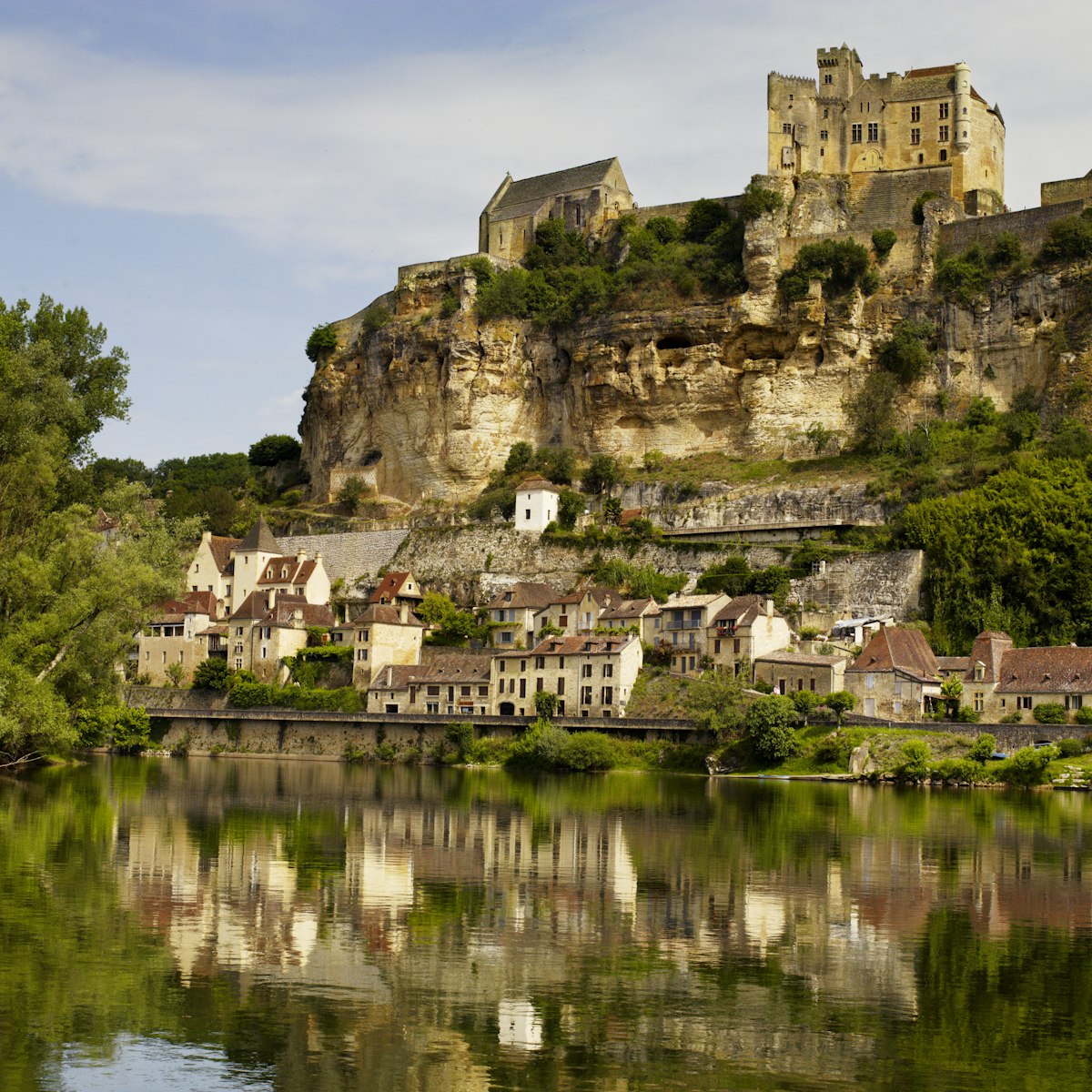France’s most famous prehistoric cave paintings are at the Grotte de Lascaux, 2km southeast of Montignac. Naturally sealed and protected for millennia, it was discovered in 1940 by four teenage boys searching for their dog, Robot. In December 2016, a new interpretation centre and cutting-edge reproduction of the cave was unveiled to the public, allowing visitors to view the entirety of Lascaux' artwork for the first time since 1963.
Popularly known as Lascaux IV, the new International Centre for Cave Art consists of two main sections: an hour-long guided tour through the re-created cave, followed by a self-guided tour. If you're sceptical about visiting a reproduction, don't be: the latest in laser technology and 3D printing was used to reproduce the exact wall contours, engravings (absent in Lascaux II, the previous reproduction) and the nearly 600 paintings down to the very millimetre. It feels remarkably like a real cave – it's damp, dark and chilly, and the whole experience can be legitimately spine-tingling.
After the cave visit, you're turned loose for the self-guided tour, which utilises a personal tablet to help visitors explore the excellent Lascaux Studio. Here you'll find life-size renderings of all the major scenes in the cave, providing context with regard to painting and engraving techniques, superimposed images and more. Don't miss the Shaft (the least accessible part of the cave), where an extremely rare representation of a human, with a bird's head, is depicted. A multimedia show, 3D film and the interactive Galerie de l’Imagination, examining the relationship between cave art and modern art, round out the exhibit.
Advance reservations are highly recommended and can be made online up to two days in advance. A certain number of tickets are only sold on site, so if you can't get a ticket through the website, show up early and you may be in luck. Note that it is still possible to visit Lascaux II (€13; open April through October), though tours are only in French. Lascaux is located 1.2km southeast of Montignac.




